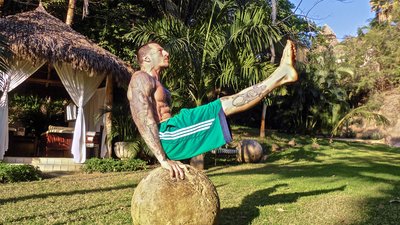Trends move fast in fitness, and words change just as fast. It wasn't long ago that there wasn't really "core" training. There were just "abs," and you attacked them with the specific goal of making them stand out in crystal clarity.
Then, more recently, the muscles of the rectus abdominis, which runs vertically from the pubic bone all the way up to the chest, allowed a couple of other members into its little club. The core expanded to include the obliques, which run diagonally and are responsible for trunk rotation, and the transverse abdominis, which spans horizontally across the abdominal wall.
All together, they sound pretty complete, huh?
Far from it. While these muscles are undeniably a part of your core, they are far from the whole picture. As I've grown as a trainer and a trainee, I've come to consider the core to include the entire human torso: chest, shoulders, butt, hip flexors, upper and lower back. Yes, the abs are included, but they're no longer where the story ends.
I've come to view core training in a different way, too. It's about building mastery in exercises that demand the abdominal muscles to work with those other muscles. They should all function together, in full-body harmony, to make you strong, solid and unyielding.
Danny's Core Curriculum
Once you adopt a more holistic view of the human core, the benefits of core training quickly expand beyond merely having diamond-cut abs—although that's definitely a worthy goal. Your integrated core training can deliver increased power, improved posture, greater balance, better overall performance, and fewer aches and pains. This is far more than just detail work; the core training you do becomes some of the most essential activity in your regimen.
While there are an infinite number of ways to train your core, these four are what I consider the most indispensible core exercises in existence: bold in their simplicity, unparalleled in their worth. They're all isometric holds that build real world strength and stability. You won't find crunches on this list. Even my beloved sit-ups have to wait until you're proficient in these staples.
Plank
The plank has its roots in yoga, but it has been widely adapted into all types of strength training. It is one of the most foundational exercises there is. For me, a solid plank is mandatory before moving on to other modalities of training.
To perform a plank, place yourself in a horizontal position face-down on the ground, with your feet together and your forearms on the floor. Pull your shoulder blades down and spread them apart while pressing down with your elbows. The body should be straight and tight, with your hips neither too high in the air nor too close to the ground. Don't let your shoulders shrug up by your ears. It should be a straight line from your shoulders to hips to heels.
If the plank is too difficult, you can modify it by performing it on your knees rather than your toes, maintaining a straight line from the shoulders to the knees. By shortening the length of your body, the leverage changes, making the exercise more mechanically forgiving and therefore less difficult. To make it harder, you can elevate your feet by placing them on a step, bench or plyo-box.
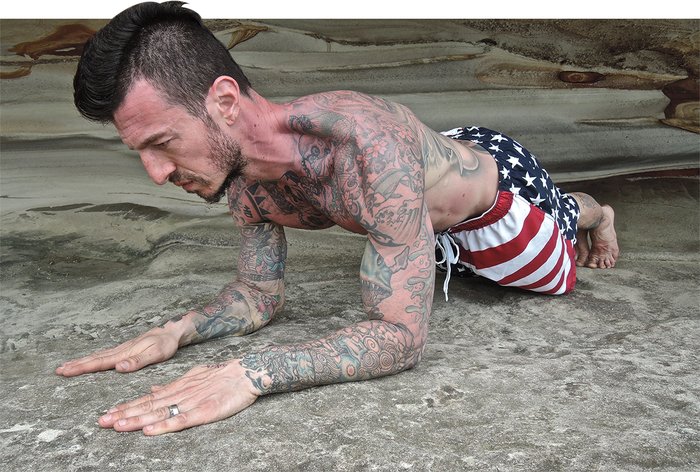
- Plank standards: rest 30-60 seconds between sets
- Beginner: 3 x 30-second hold
- Intermediate: 3 x 60-second hold
- Advanced: 3 x 120-second hold
Side Plank
The side plank is a variation of the classic that places emphasis on your right and left sides.
Personally, I like transitioning into the side plank from the top of a push-up position. From that top position, pivot your body so that one hand is on the ground directly under your shoulder with your feet together and your side facing the floor beneath you. Keep tension throughout your entire body, and make sure you train each side evenly.
Like the standard plank, common mistakes include letting the hips drop too close to the ground or lifting them too high in the air. It's normal to place more tension on the side that faces the floor, as it will be primarily emphasized, but don't let that lead you to tent up your opposite hip.
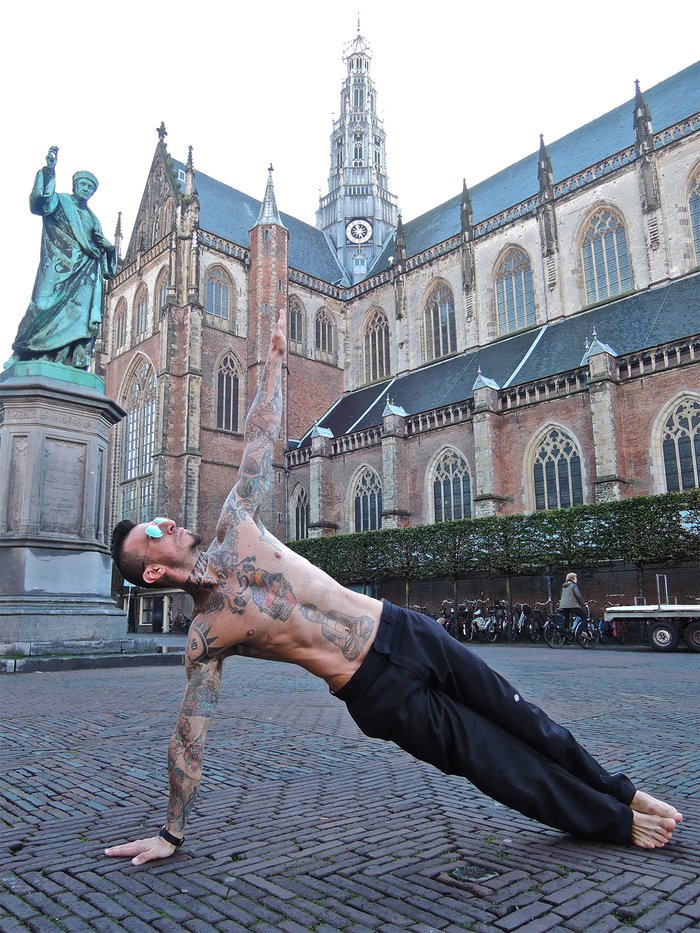
- Side-plank standards: rest 30-60 seconds between sets
- Beginner: 2 x 20-second hold per side
- Intermediate: 2 x 45-second hold per side
- Advanced: 2 x 90-second hold per side
Hip Bridge
The hip bridge is the perfect complement to the previous two exercises, as it places greater emphasis on the posterior muscles of the body. Alongside the plank, which stresses the anterior muscles, and the side plank to fire up the obliques, you've got an all-around approach.
Start off lying on your back with your knees bent and your feet flat on the floor. Keep your arms by your sides. Now squeeze your butt and press your heels into the ground, raising your hips into the air as high as you can. When performing this move, it can help to wiggle your shoulder blades together and grab your hands in a palm-to-palm grip behind your back for more leverage.
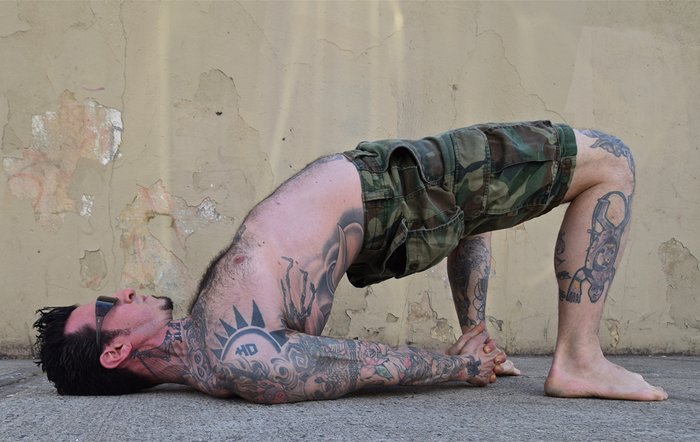
- Hip-bridge standards: rest 30-60 seconds between sets
- Beginner: 2 x 45-second hold
- Intermediate: 2 x 90-second hold
- Advanced: 2 x 180-second hold
L-Sit
The L-sit is the most difficult exercise on this list. In addition to being a more advanced core exercise, it also requires a surprising amount of arm and even leg strength, as well as a flexibility component.
To perform an L-sit, start out by simply sitting on the floor with your hands flat on the ground just outside of your hips. Extend your elbows and push your hands down, lifting your legs and upper body into the air with your legs straight so your body resembles a capital letter L—hence the name.
It can be helpful to keep your arms close to your body, with your elbows locked and pointed back behind you. Focus on creating tension with every single muscle in your body. If your quads start shaking after just a few seconds, you're in good company.
If you have a hard time getting into position from the floor—which is normal—practice the L-sit on a bench, between two boxes, on parallettes, or using other raised object.
Because your legs can drop below surface level, the elevated surface will provide more leeway to lift into position. You may also bend one or both knees to reduce the difficulty as you progress toward the full L-sit.
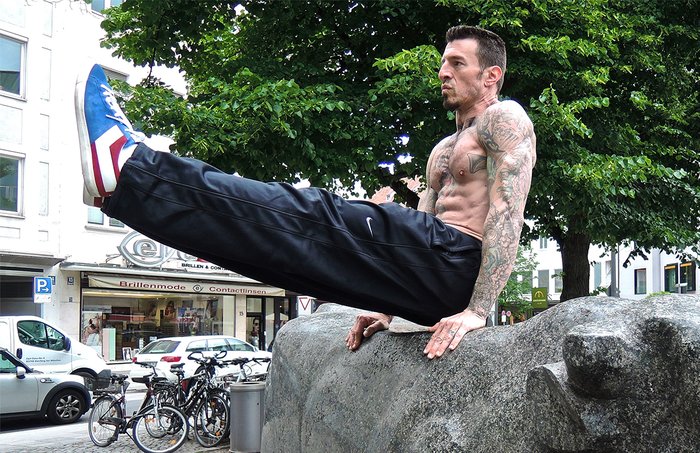
- L-sit standards: rest 30-60 seconds between sets
- Beginner: 3 x 10-second hold
- Intermediate: 3 x 20-second hold
- Advanced: 3 x 45-second hold
Hold it!
These "four for the core" moves are just the tip of the proverbial iceberg. There is plenty more to explore, from leg-raise variations to levers, but being able to meet the intermediate or advanced standards for these four will pay off immensely in whatever comes next.
Furthermore, it is important to be aware of your core, even when you're not training. After all, you use it every time you stand up, sit down or lift anything off the ground. So stand tall. Focus on full-body synergy. Keep your body tight. Keep the dream alive!

